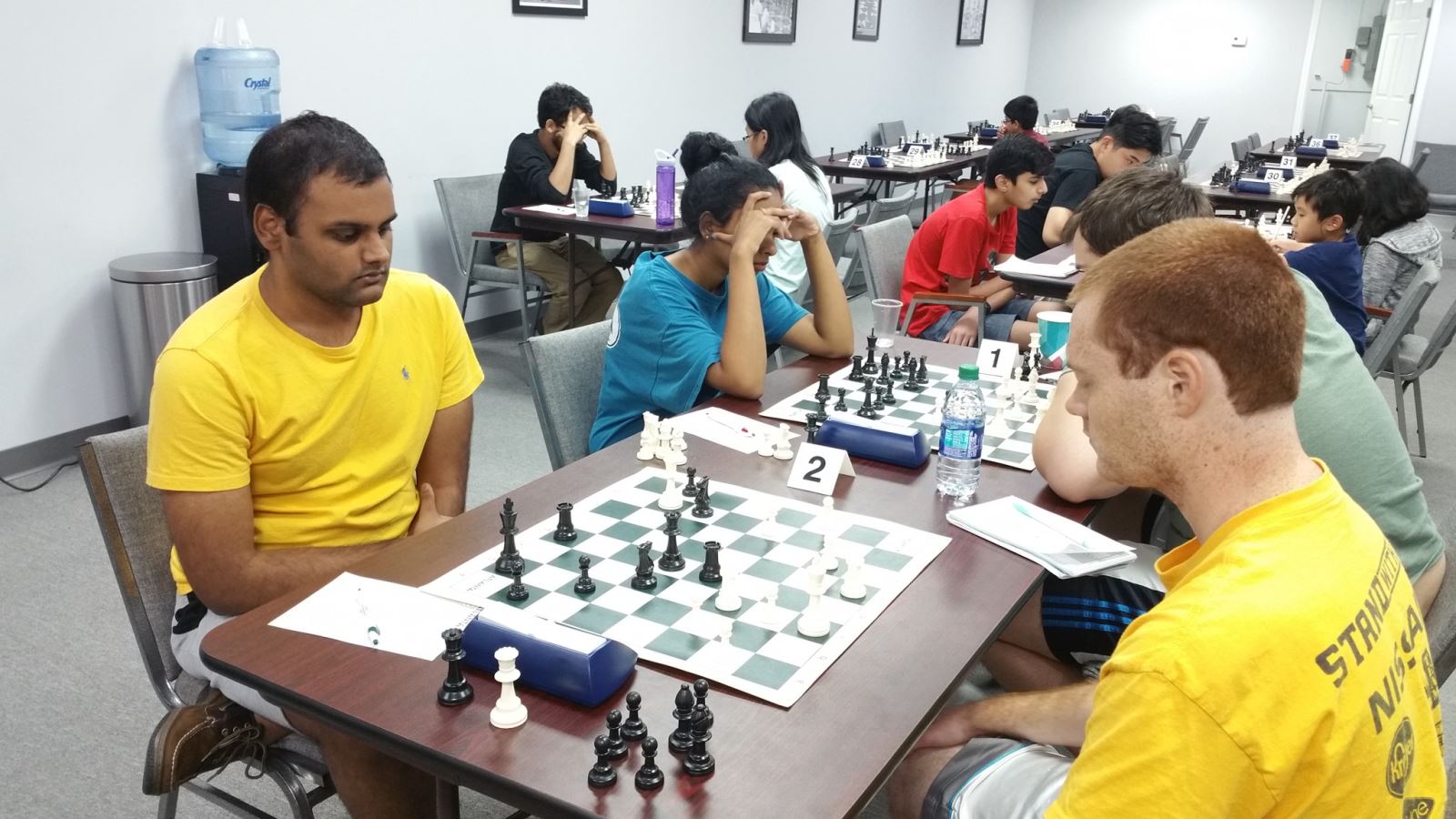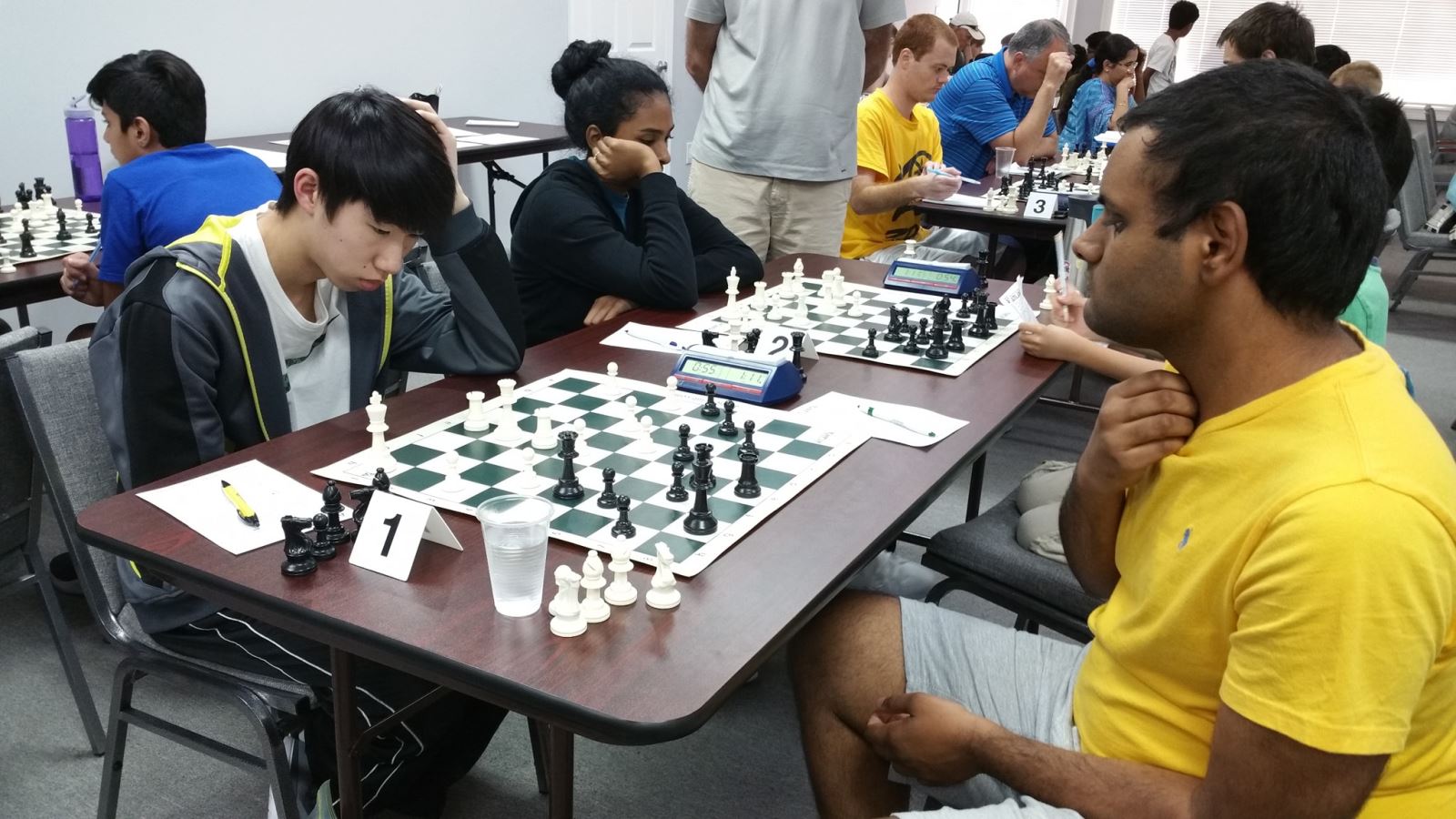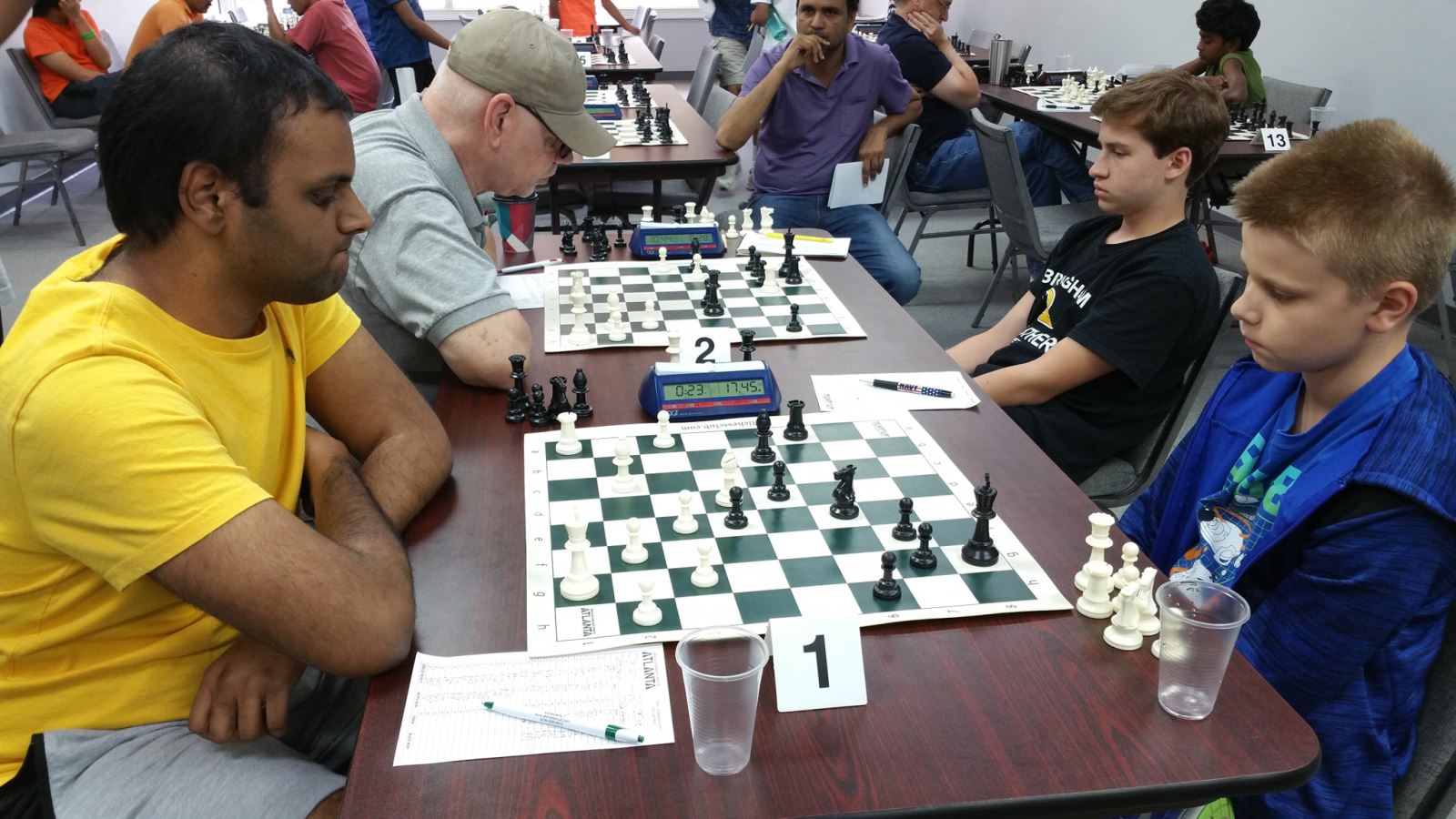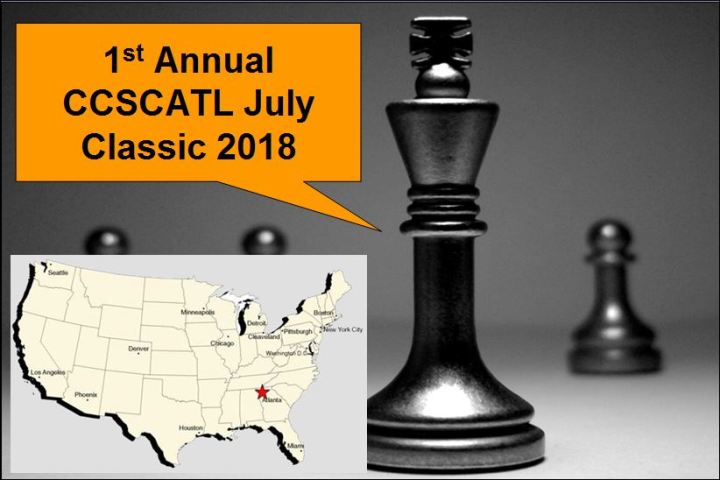1st Annual CCSCATL July Classic
Georgia, in the Southeast of the USA, is teeming with tournaments thanks to the Chess Club and Scholastic Center of Atlanta. Weekend Open tournaments are a common experience of the US chess life. Money prizes are good, and the competition is hard.
The Chess Club and Scholastic Center of Atlanta (from now on abbreviated as CCSCATL) is always avant-garde for chess initiatives. The novelty of this tournament was the moms of players registered for the tournament could play for free — no entry fee! This idea is great because we surely want to include more women in chess and this could be one way to do it. But especially parents are important because then they could understand more about their children and how hard a tournament can be! In Georgia, the scholastic population is nearly 80% of all chess players. It is common to see chess parents bored at tournaments and this novel idea could be a way to make families more excited to go to play at a tournament.
A weekend tournament can be a gruelling experience for those who are not accustomed to it. A game generally lasts three hours. On Saturday, three games are played, which means nine hours straight of chess! Then on Sunday, there follows another six hours with the last round being particularly important. The 5th round is also known as the money round, because it distinguishes who makes money, from whom goes home with just a big headache!

No really...I'll take the money...
Shanmukha Meruga a young National Master (from now on abbreviated as NM) won the Open tournament section with 4½ points out of 5. Read all about it in this interview with the winner and then check out the exciting games he played.
Davide Nastasio: Tell me something about you. I know you come from India, what do you do in the USA, how long have you been here...
Shanmukha Meruga: Yeah, as you said, I moved to the US from Hyderabad, India about 10 years ago with my family. My mother got a job as a special education teacher and my father, brother and I received dependent visas.

NM Shanmukha Meruga playing Miles Melvin
DN: What do you study in school?
SM: I am a pre-med student majoring in Biochemistry at the University of Georgia. I will be applying to medical school next year.
DN: How long ago did you begin to play chess, and how did it happen that you learned chess?
SM: I learned how to play and started playing chess about six years ago when my mother advised me to go to my middle school chess club. I started playing tournaments the summer of 8th grade.

Meruga playing versus Preston Lee
DN: Did you play in India?
SM: No, not at all. The schools in India gave much more importance to education and not as much to extracurricular activities.
DN: Is there a lot of chess activity in your native city?
SM: Yeah, much more than Georgia. Hyderabad is a well-populated city and in general, chess is much more popular in India, because of Vishy Anand than the US.
DN: How did you prepare for this tournament?
SM: I did not prepare much. I just looked at a few opening lines the day before the tourney.

NM Meruga versus Alexander Rutten
DN: Did you win other important tournaments?
SM: I won many tournaments, but the one I remember the most is the Junior Invitational, which gave a chance to play the prestigious Denker tournament of High school champions.

DN: I know you are a student. Does that give you a lot of free time to study chess?
SM: Unfortunately not, I barely have any time to play chess and let alone study chess.
DN: You won $600 in this tournament, but you were telling me one can make the same amount of money in Poker? And Poker is not really based on luck, one must know what he's doing right?
SM: Yeah, I got into playing poker a few months ago and I fell in love with the game. Poker is similar to chess in many ways and is very much a skill game, so the best player wins in the long term. The main difference between chess and poker is variance, which are the swings in the game. This sometimes makes good players lose to bad players, but in the long term, good players can overcome variance.
DN: Many chess players would like to improve, do you have any advice?
SM: My main advice would be to play as much as you can and analyse the games you played.
DN: What characteristics do you think makes you a good chess player?
SM: Well, the first is determination. When I put my mind to something or set a goal for myself, I cannot think of anything else until I achieve it. Another characteristic might be that I am really confident and sometimes overconfident and might come off as arrogant. This self-belief made me not be afraid to play anyone higher rated and caused me to win many games.
I want to thank NM Shanmukha Meruga for this interview and move to the games. I lightly annotated them, giving written explanations for the evaluations. In this way also beginners can appreciate a game at master level:
This French Defence DVD is a complete attacking opening repertoire for black after 1.e4 e6. GM Nick Pert has played the French defence his whole life and provides all his la test and most up to date analysis crammed into 1 DVD.



























